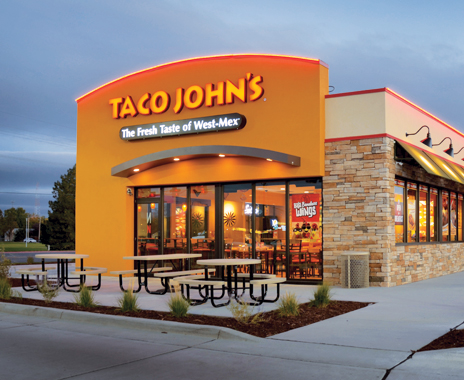Restaurant brands that are around for any length of time are likely to undergo a rebrand at some point, whether it’s a subtle store redesign or a wholesale menu shift. Once the initiative is underway, costs are typically tangible and easy to identify.
But before the refresh begins, activities behind the scenes must also be funded. Understanding the research and development (R&D) behind a rebrand and planning for those expenses is an art form unto itself.
Unlike the hard costs—sourcing new ingredients, printing menus, installing kitchen equipment—activities in the R&D phase are more difficult to classify.
Sean Muldoon, senior vice president of R&D, quality assurance, and supply chain at Papa John’s, says there is a lot of nuance to everything that happens behind the scenes. “Since the late ’90s, we’ve added $50 million in incremental cost to our system,” he says. “Last year, we added extra virgin olive oil to our dough [and] that involved capital in 10 of our manufacturing facilities, which produce our dough across the United States, and it added incrementally to the cost.”
While switching ingredients is one example of a rebrand effort, such initiatives run the gamut and can be as simple as changing creative direction or as complex as improving the customer experience or shifting store layouts. Both ends of the spectrum are likely to incur R&D costs before the rebranding tasks even get underway.
Cheyenne, Wyoming–based Taco John’s recently carried out its own revamp, which involved updates to everything from packaging to uniforms and store design. Each aspect of the project required R&D time and cost to identify what types of changes should be considered.
“For us as a brand, it was really determining that scope first and putting some very rough budget numbers together about what a rebrand impact would have on the organization,” says chief marketing officer Billie Jo Waara.
The scope of a rebrand often ends up being much more than is initially assumed, experts say. Changing menu items, for example, entails more than sourcing new ingredients, and research is needed to truly understand the bigger picture. David Kincheloe, president of National Restaurant Consultants in Golden, Colorado, says that once a company begins looking at a single area, it will inevitably broaden its view to related issues.
“There are all kinds of things that get associated with it once you start peeling back the onion,” Kincheloe says. “There’s quite a bit of cost.” For example, updated menu items on the brand website and various social media channels might need to dovetail with a revamp of the overall restaurant itself, he says.
Brands like Taco John’s build many R&D expenses into the normal marketing budget. Waara says brands should be ready to re-evaluate those costs from time to time, especially when a specific refresh project appears on the horizon.
“We found as we started doing the work and the research that it created more questions,” Waara says. Taco John’s sought proposals from various research providers that focused on everything from traditional market research to brand experiences. “We really worked with them to get a variety of costs put together and planned, just like any other project,” Waara says.
Papa John’s has dollars in its annual budget for market research, focus groups, and similar R&D-related activities. Like many chains that drive new product innovation, the team may have dozens of new products in the pipeline at any one time. Wrangling everything into a workable budget requires focus.
“How do you prioritize and weed those out? And how do you make decisions on which ones you push forward?” Muldoon asks. “You don’t have to do a focus group on every product in your pipeline that people might like internally.”
Muldoon’s team found that the use of online tools such as customer surveys helps narrow the field quickly. Getting an early idea of what customers think may help ferret out those potential refresh initiatives that will have the greatest impact without blowing the overall budget before R&D is even done, he says.
When developing the budget for the R&D phase of any rebranding project, Kincheloe says that internal costs must also be estimated. “If you’re going to be pulling out a chef to do something, you may have to have more hours on your schedule to cover that gap,” he says. Labor costs and the fees to rent space or equipment may not appear on an outside vendor’s invoice, but will still consume the organization’s resources.
Staying in line with estimates requires focus and discipline, experts say. As stakeholders dive down the rabbit hole of customer surveys and input, the trail can lead almost anywhere.
Corporate structure can also play a role in forecasting and controlling R&D expenditures. Papa John’s created a framework to make information sharing efficient while reducing friction.
“Because we have the research and development function and the supply chain function working all together in concert, we’re able to accurately estimate costs very early in the process,” Muldoon says. “The R&D person here at Papa John’s sits right next to the supply chain person. We all are part of the same team working off the same plan.”










